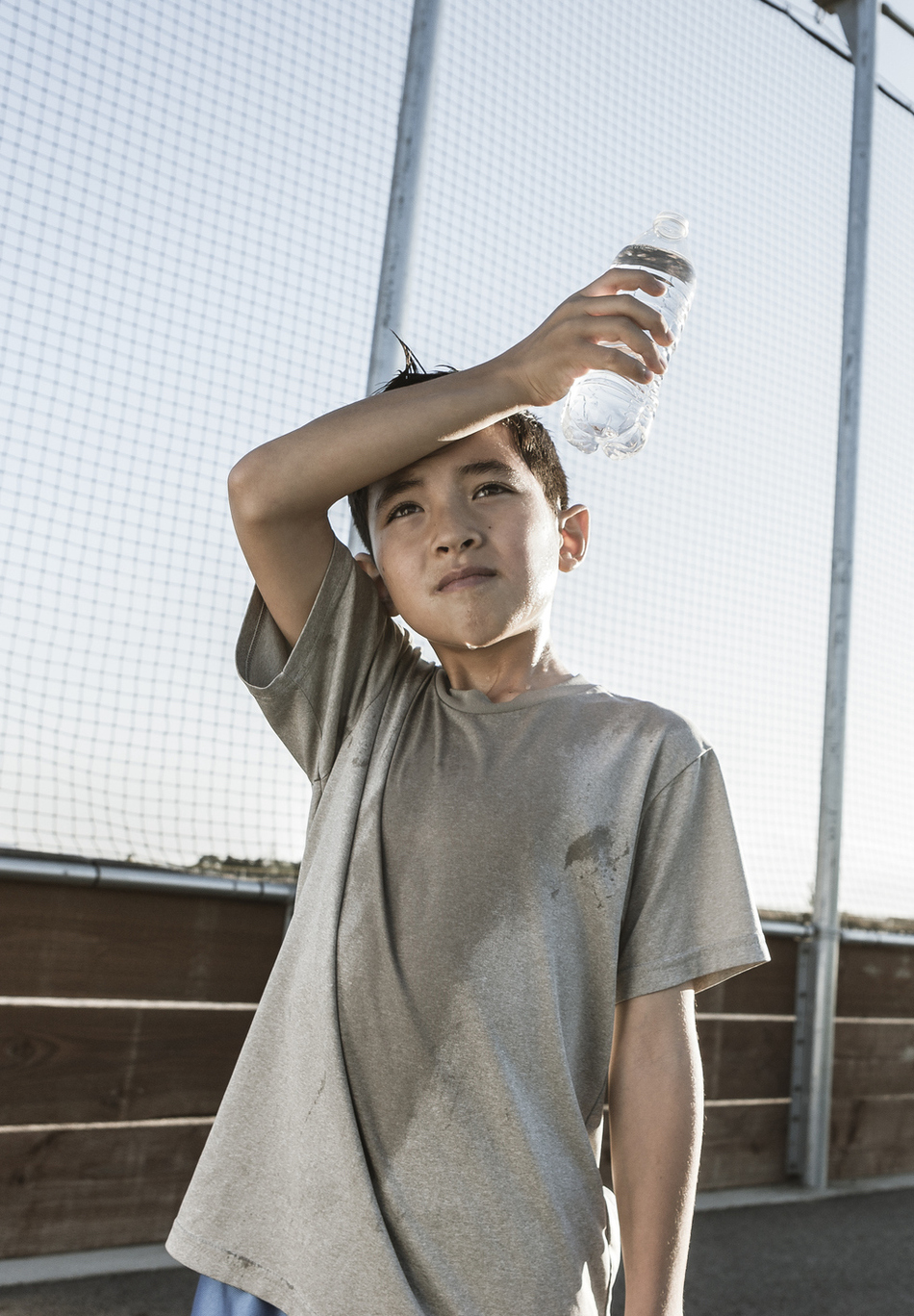
Interviewer: It seems like unfortunately every year you hear a story about a student athlete, a young athlete getting heat stroke, getting really sick or dying at times. As a parent of, perhaps, a young athlete that's in a summer program or football training camp for the fall, even in August. What should you look for and what should you know, what would you want that person to know?
Dr. Madsen: That's a great question, you know kids in the summer, as you mentioned, are in a lot of sports camps and if you're a kid in a sports camp, the number one thing you want to do is impress the coach. That's what you're trying to do, you know. So you're getting out there and even if you're feeling lightheaded, you're still pushing yourself, you want to look like you're working hard and that's where kids really run into problems, and I think that's where you can really see some issues with heat stroke and heat exhaustion, are kids who are really trying hard, it's 100 degrees outside, they're playing football, they're in pads, whatever the situation is.
So the number one thing to watch for is let our kids know if they're feeling lightheaded, if they're feeling dizzy, to sit down and take a break because those are the first symptoms of heat exhaustion, as they start to feel nauseated, lightheaded. If they get to a point where they feel like they're passing out, if they look to you like they're just not responding well, that's when it becomes really serious and we get really concerned.
Interviewer: And hopefully a coach recognizes that as well and is not going, Madsen, man up.
Dr. Madsen: Exactly. Hopefully coaches are aware of it, but you've got to figure too, these coaches have 30, 40, 50 kids out there. They can't watch every one and know exactly what they're feeling so, yeah, hopefully they're aware, but definitely the kids, they need to let the coach know when they're just not feeling quite right.
Interviewer: Is there anything that would tell me that maybe my kid might be more or less susceptible to heat exhaustion, or heat stroke as somebody else, I mean, does it vary person to person?
Dr. Madsen: There's definitely some variability's. Certainly if you've got a little more weight, if you're a little heavier, that's going to increase your risk of heat exhaustion or heat stroke. If you've had problems in the past, that's something to be aware of as well. Obviously, depending on the type of sport the child is participating in and if they're wearing a lot of pads, exercising a lot, doing a lot of sprints, things like that where they're getting their body temperature up, those are situations where you need to keep a close eye on them as well.
Interviewer: All right, what do I do if I suspect heat exhaustion, maybe we should even say, what's the difference between heat exhaustion and heat stroke, and what should I do then?
Dr. Madsen: Yeah, so that's a great question. So that question often comes up, what is heat exhaustion mean, what is heat stroke? So heat exhaustion is when your body temperature gets up, I think we've all experienced that, you're lightheaded, a little big nauseated, just not feeling quite right. Heat stroke is when it gets dangerous, we're talking body temperatures of about 105 degrees and in that situation we're often times seeing people pass out, they're unresponsive. That's when they're at risk for organ failure and that's when it gets very serious, so once it gets to that point, just even the lightheadedness, dizziness, get in the shade, try and cool down, drink some water, try and get that person cooled down with a fan, something to try and get the body temperature down.
Interviewer: Pour water on their head, is that fine?
Dr. Madsen: Sure, absolutely. Pour water on their head, you know one thing you can do to really get the body temperature down quickly is with ice packs. Don't put ice directly on the skin but if you've got it in some sort of a pack you can put it in the arm pits, there's a lot of blood flow through there so you can get the body temperature to cool down fairly quickly, and if it's really serious where they're just not responding to you, if they're very confused, in that situation I'd get them to the hospital. Call 9-1-1 and make sure you get help for them.
Interviewer: It's nothing to mess around with at that point.
Dr. Madsen: Exactly. Once they're not responding or they're just not very responsive to you then it's much more serious.
Interviewer: Should you err on the side of caution if you have a question?
Dr. Madsen: Absolutely, err on the side of caution, you can always call the EMTs there, they can take a look, they may even check their body temperature, see how they're looking and maybe say, hey, he's okay, probably doesn't need to go to the hospital, but certainly, especially in sports camps, err on the side of caution.
updated: August 6, 2021
originally published: September 24, 2013
Learn More About Pediatric Sports Medicine & Orthopedics
Seven Questions for a Pediatric Orthopedic Surgeon
On this episode of Seven Questions for a Specialist, pediatric orthopedic surgeon Joshua Speirs, MD, shares insights into the typical diagnoses he encounters, debunks common misconceptions about pediatric orthopedics...





